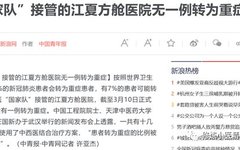Why did the Guangzhou University of Chinese Medicine Affiliated Hospital achieve the remarkable feat of no deaths and no infections among medical staff during the 2003 SARS outbreak, with patients showing no sequelae, yet this did not prompt a reevaluation and understanding of Traditional Chinese Medicine (TCM)?
It is because TCM could not present a universally accepted theory to explain its actions. Those who do not have a deep understanding of TCM believe that such outcomes are merely coincidental, unrepeatable phenomena, and that TCM may not be reliable in future epidemics. Some even argue that TCM practitioners, unaware of the microorganisms involved, claim to have cured SARS, which they consider deceptive. They deny the facts surrounding the Guangzhou University of Chinese Medicine Affiliated Hospital’s treatment of SARS.
However, facts speak louder than words. Now, in the face of the ongoing global pandemic caused by COVID-19, how does TCM perform?
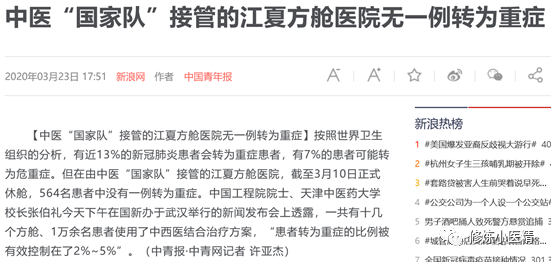
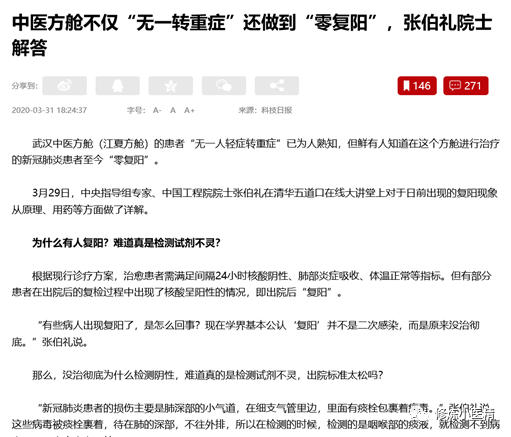
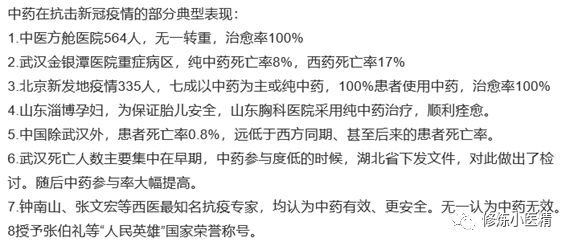
Diseases like SARS and COVID-19 fall under the category of TCM external pathogens. Modern medical conditions such as influenza, acute purulent tonsillitis, acute upper respiratory infections, meningitis, and Japanese encephalitis, as well as common ailments like colds, fevers, chills, headaches, nasal congestion, runny nose, cough, phlegm, body aches, and joint pain, are also classified as external diseases.
To effectively address external diseases, a mature and comprehensive theoretical framework is essential to guide clinical practice. Especially after recognizing the drawbacks of antibiotics, TCM theories on external diseases will gradually become the preferred choice for humanity. Teacher Zou Shizhen has organized a logically rigorous study of external diseases, encompassing treatment methods for all infectious diseases from the common cold to severe infectious diseases, breaking down the famous prescriptions from the Treatise on Cold Damage (Shang Han Lun) and Warm Disease Theory (Wen Bing) into their medicinal components, and providing detailed commentary on the misconceptions that have persisted in TCM for nearly a thousand years, thus unifying the two systems of Cold Damage and Warm Disease. Teacher Zou Shizhen’s integration of Cold and Warm theories in TCM external pathology has created a coherent and scientifically rigorous discipline. This article will primarily introduce Teacher Zou’s external pathology.
1. A Brief Review of External Pathogenic Factors
The Six Excesses (Liuxin), namely wind, cold, heat, dampness, dryness, and fire, are collectively referred to as external pathogenic factors.
Wind, cold, heat, dampness, dryness, and fire represent six different climatic conditions in nature, known as the “Six Qi.” When the climate in nature becomes abnormal, exceeding the human body’s adaptive capacity, or when the body’s righteous qi is insufficient to resist the destructive effects of the Six Qi on bodily balance, these factors become the cause of disease, referred to as the Six Excesses.
Humans live in the world, constantly surrounded by the climate formed by heaven and earth. The Six Qi are the most common physical pathogenic factors affecting human function, thus TCM originally used these to represent five categories of external pathogenic qi (heat and fire belong to the same category). These five categories encompass all pathogenic factors from the external environment that affect human function, whether they are physical, chemical, or biological factors, as long as they cause similar changes in the patient’s body, they can be considered the same type of pathogenic factor.
2. Classification of External and Internal Diseases
Whether external or internal diseases, their essence is the imbalance of the body’s dynamic equilibrium. Wind, cold, heat, dampness, dryness, and fire are external factors that can lead to bodily imbalance, generally considered external diseases. Emotions such as joy, anger, worry, thought, sadness, fear, and shock are internal factors that can also lead to bodily imbalance, generally considered internal diseases.
This is merely a rough classification, and there are no strict standards for differentiation. For example, if a person suddenly encounters a tragic event and experiences excessive sadness leading to obvious physical discomfort, or if a child is frightened and develops a fever and chills, is this classified as an external or internal disease? It is difficult to distinguish.
Western medicine, after discovering bacteria and viruses, generally considers diseases caused by infections from these microorganisms as external diseases, while diseases without identifiable bacterial or viral infections are classified as internal diseases. However, TCM’s understanding of external pathogenic factors far exceeds the scope of bacteria and viruses; for instance, frostbite is also caused by external pathogenic factors without bacterial or viral infection. Conversely, hepatitis B, although caused by a virus, is more appropriately classified as an internal miscellaneous disease.
Therefore, the classification of external and internal diseases is not particularly meaningful; it is unnecessary to strictly differentiate them. The essence of all diseases is the imbalance of the body, and treatment aims to correct this imbalance. As long as one can accurately assess the state of the body and formulate a correct corrective plan, that suffices. Generally speaking, diseases that arise quickly also resolve quickly, while those that accumulate over time take longer to treat. The greatest significance of distinguishing between external and internal diseases lies here.
There is a saying: external febrile diseases are akin to an invasion by external enemies; we need to mobilize national defense forces, sending in the army to fight. If it is an internal miscellaneous disease, the situation changes to internal conflicts among the populace, requiring police intervention, or at most, the armed police.
This analogy in TCM seems vivid, yet after reading it, people still do not understand what constitutes an external disease and what constitutes an internal disease. Because we do not know what the army and police represent in medical terms, such metaphors are meaningless.
Another analogy states: sugar is sweet, belonging to the earth element; blood flows in the vessels, akin to rivers and canals in the body; diabetes is when sugar enters the blood, representing the loss of water and soil in the body, and treatment involves planting grass and trees to prevent this loss.
This analogy is also quite relatable, easily understood, and beneficial for the dissemination of literature, yet it lacks any real significance. Because no one understands how to plant trees or grass within the body? Such metaphors in explaining TCM may excite listeners, but in practice, they remain bewildered.
To restore TCM theory to the human body, to analyze the step-by-step evolution from health to disease through rigorous logical analysis, and to analyze how treatment methods affect the body to induce changes, only then can TCM be easily understood and effectively applied.
3. In Treating Diseases Like SARS, Which is Fundamental: Killing Pathogens or Correcting Bodily Imbalance?
Modern science has discovered the relationship between bacteria, viruses, and infectious diseases, leading Western medicine to focus on eradicating pathogenic microorganisms as a treatment for infectious diseases.
TCM, on the other hand, treats any disease by correcting the body’s imbalance to restore normalcy, including infectious diseases caused by bacteria and viruses. Thus, in treating infectious diseases like SARS, TCM only needs to assess the patient’s manifestations to determine their bodily state and formulate an appropriate treatment plan without needing to identify the specific microorganisms involved.
Many believe that since microorganisms are the cause of such diseases, eradicating them must be the fundamental solution. This understanding is incorrect.
Microorganisms are merely a cause of disease, not the essence of the disease. The essence of all diseases is the imbalance of the body. This may still be unclear, so let me illustrate. Some individuals living in poor sanitary conditions, such as beggars, are exposed to numerous microorganisms, yet some do not fall ill. These microorganisms coexist peacefully with their bodies, not triggering an imbalance, thus not leading to disease. In other words, the presence of microorganisms does not equate to the occurrence of infectious diseases. The essence of disease is bodily imbalance, not the presence of microorganisms.
The approach of eradicating pathogenic microorganisms does not address the correction of bodily imbalance; its therapeutic effect is merely to prevent infectious diseases from worsening under the influence of increasing bacteria and viruses, allowing the body to gradually recover. If the bodily imbalance is severe and the body cannot recover on its own, patients may experience various discomforts even after the infection is controlled, with laboratory tests showing no identifiable pathogens, leaving Western medicine at a loss.
The absence of pathogenic microorganisms in a healthy body is due to the fact that a healthy bodily environment is unsuitable for the growth of such microorganisms. Therefore, correcting bodily imbalance not only restores the patient’s condition to normal but also deprives bacteria and viruses of their living environment, preventing their survival and reproduction within the body. If the bacteria and viruses are particularly potent, and the medication has just corrected the bodily imbalance, they can quickly revert the situation. Thus, treatment for such diseases cannot be administered once or twice; the frequency of medication must be increased. This is why Teacher Zou Shizhen advises patients to take medicine every three to four hours until the fever subsides when treating various infectious diseases, including colds and fevers.
All diseases fundamentally stem from bodily imbalance; correcting this imbalance is the root cause of treatment, while other methods are merely symptomatic.
In practice, both TCM and Western medicine have their strengths and weaknesses in treating infectious diseases; there is no method that is solely advantageous without disadvantages. Thus, both treatment approaches have their respective pros and cons, which have been detailed in previous foundational TCM content. The most important point is that TCM can formulate effective treatment plans without needing to identify the pathogenic microorganisms, which is invaluable during the onset of unknown epidemics. 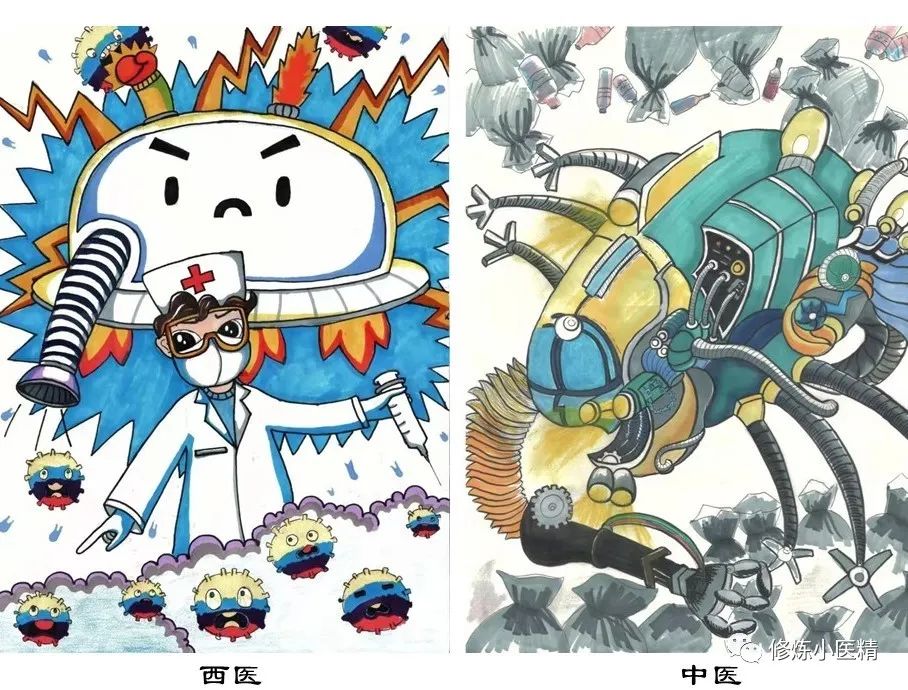
○ Wang Sansui, Hand-drawn
4. An Overview of Teacher Zou Shizhen’s TCM External Pathology
TCM external pathology is a discipline with its own unique epistemology and methodology, capable of treating various infectious diseases. Its content includes the Treatise on Cold Damage (Shang Han Lun) by Zhang Zhongjing and the Warm Disease theories established by Ye Tianshi, Xue Xue, Wu Jutong, and others. Although the works passed down by these individuals primarily address how to handle specific situations, rarely elaborating on theory, the formation of these treatment methods is not arbitrary; they are based on inherent mechanisms and logic. A thorough study of these ancient texts to summarize their mechanisms constitutes the theory of TCM external pathology. Although few practitioners throughout history have achieved this, it has now been summarized by Teacher Zou Shizhen in his integration of Cold and Warm theories in TCM external pathology. The theory is very straightforward, over 100,000 words can fully elucidate it, and it is very easy to understand.
Teacher Zou Shizhen’s TCM external pathology can be clearly summarized as follows:
1.TCM does not treat infectious diseases directly by killing pathogens but by correcting the patient’s bodily imbalance.
2.TCM understands various pathogens not by studying the pathogens themselves but by observing the imbalances they cause in the body.
3.TCM’s approach to treating infectious diseases has both advantages and disadvantages.
For instance, when new pathogens emerge, it is possible to formulate correct medical plans without needing to identify the pathogens, which is an advantage. However, even when the pathogens are identified, it is often impossible to create a unified, easily disseminated treatment plan; it still requires tailoring to each patient’s specific situation, which is a disadvantage.
The greatest difference between TCM and Western medicine lies in the fact that Western medicine is based on modern science, viewing the world as material, believing that only visible substances are real. Based on this, life is also material; if no relevant material basis is found, everything is dismissed.
Although Western medicine is based on modern science, it is evidently lagging behind it. Biology currently considers molecular biology to be the limit of biological research, while physics has already recognized quantum phenomena. Clearly, research in life sciences is significantly behind modern science, and there will undoubtedly be many revolutionary scientific breakthroughs in this field; current conclusions cannot serve as standards for judging right or wrong.
TCM, grounded in traditional Chinese philosophy, believes that the material world arises from the void. The void does not mean nothingness, but rather a form of existence that ordinary humans cannot perceive. When Qi (vital energy) gathers, it takes form, ultimately resulting in matter. Matter can be infinitely subdivided without completely disappearing. When the tangible and substantial parts are subdivided to the point of having no form or substance, a quantitative change leads to a qualitative change, becoming a different existence from the material world, which traditional philosophy refers to as Qi. When Qi is further subdivided to the point of qualitative change, it becomes the imperceptible void.
The formation of the material world is the process of bringing forth from the void, which is the opposite of this infinite subdivision process. First, Qi emerges from the void, gathers, and takes form, resulting in matter. The state of Qi determines the state of matter. TCM treats the human body by adjusting the state of Qi to regulate the body’s condition. Qi determines matter, so TCM is closer to the essence of life than Western medicine, which is limited to material aspects.
Although the relationship between Qi and structural form is that Qi determines structure, the gathering of Qi into form is a relatively long process. First, Qi gathers, and only after a long time does it take form. Therefore, when there are already significant changes in structural form, it indicates that Qi has been abnormal for a long time. This is why various sub-health states that Western medicine considers not yet diseased are already deemed abnormal by TCM—Qi is already abnormal, but the material changes observable by Western medicine have not yet occurred.
Abnormalities in the body’s structure are caused by long-term Qi abnormalities. Restoring normalcy through Qi adjustment fundamentally resolves the issue, but this requires a long time. Sometimes, it is not feasible; for example, if the pelvis has structural abnormalities due to long-term Qi issues and a woman is about to give birth, the abnormal pelvic structure may lead to difficulties in labor. In such cases, immediate surgical intervention by Western medicine is necessary to save lives. Thus, it is not that TCM’s closeness to the essence of life means that Western medicine is unnecessary. In specific situations, both TCM and Western medicine have their strengths.
In terms of external diseases, bacteria and viruses, including even smaller prions, are already formed pathogenic factors. Understanding the concept of Qi, one can also realize that there are pathogenic factors that have not yet formed and remain in a Qi state. Because they have not taken form, it is impossible to present specific substances for observation. However, to deny their existence due to this limitation is to restrict one’s understanding, ultimately leading to many diseases being classified as having unclear causes. If the cause is not clear, discussing treatment becomes a castle in the air.
TCM’s understanding of various external pathogenic factors does not study them in isolation; rather, it examines the effects of external pathogens on the body and the resulting imbalances. Therefore, what the external pathogens are is not important; what matters is the changes they induce in the body. As long as the resulting bodily imbalances are similar, regardless of the specific nature of the pathogen, they belong to the same type of pathogenic factor. The state of bodily imbalance refers to the imbalance of Yin and Yang, which can be further detailed using the Five Elements. The bodily state described using the Five Elements essentially reflects the nature of the pathogenic factor affecting the patient. Thus, even with countless different pathogenic factors in the external environment, they can be categorized into five types according to the Five Elements. This is why Teacher Zou Shizhen asserts that even a thousand years from now, regardless of bacterial or viral mutations, from the perspective of someone who truly understands TCM, there will still only be five categories of external pathogens.
Traditional TCM uses the six climatic conditions of wind, cold, heat, dampness, dryness, and fire to represent all external pathogens. Among these six conditions, heat and fire belong to the same category of the fire element. Therefore, although traditional TCM refers to external pathogens as the Six Excesses, it essentially encompasses five categories of external pathogens. These six climatic conditions are merely a metaphor representing all external pathogens, including physical, chemical, and biological factors. Whether the pathogenic factors leading to common infectious diseases or those causing contagious diseases, they all fall under this classification method for external pathogens. Thus, pestilential qi, in nature, is also classified as one of the Six Excesses, but it possesses strong contagiousness.
All external pathogens, including bacteria and viruses that may emerge a thousand years from now, are already included in these five classifications. As long as one learns the treatment methods for diseases caused by these five pathogenic factors, they can address all diseases caused by external pathogens.
TCM does not treat these diseases by killing pathogens but by correcting bodily dysfunction, based on the patient’s state of imbalance, a method known as syndrome differentiation and treatment. As long as the body’s imbalance is accurately identified, even without knowing the specific bacteria or viruses involved, a correct treatment plan can be formulated. This is one of the advantages of TCM in treating epidemics, as emphasized by Teacher Zou Shizhen: the ability to formulate effective treatment plans before identifying the pathogens, thus gaining time to treat patients at the onset of each epidemic.
Teacher Zou Shizhen’s TCM external pathology encompasses the basic content of the nature of the five external pathogens, the human body model, the changes induced at various levels of the body by each external pathogen, the harms of each change, and how to treat them, detailing the role of each herb in the treatment plan. The entire system is logically rigorous and interconnected, described using changes in the human body that everyone can perceive, making it understandable even to those with a middle school education, yet it transcends modern science and traditional TCM, providing fresh insights even to experts and professors from various fields.

